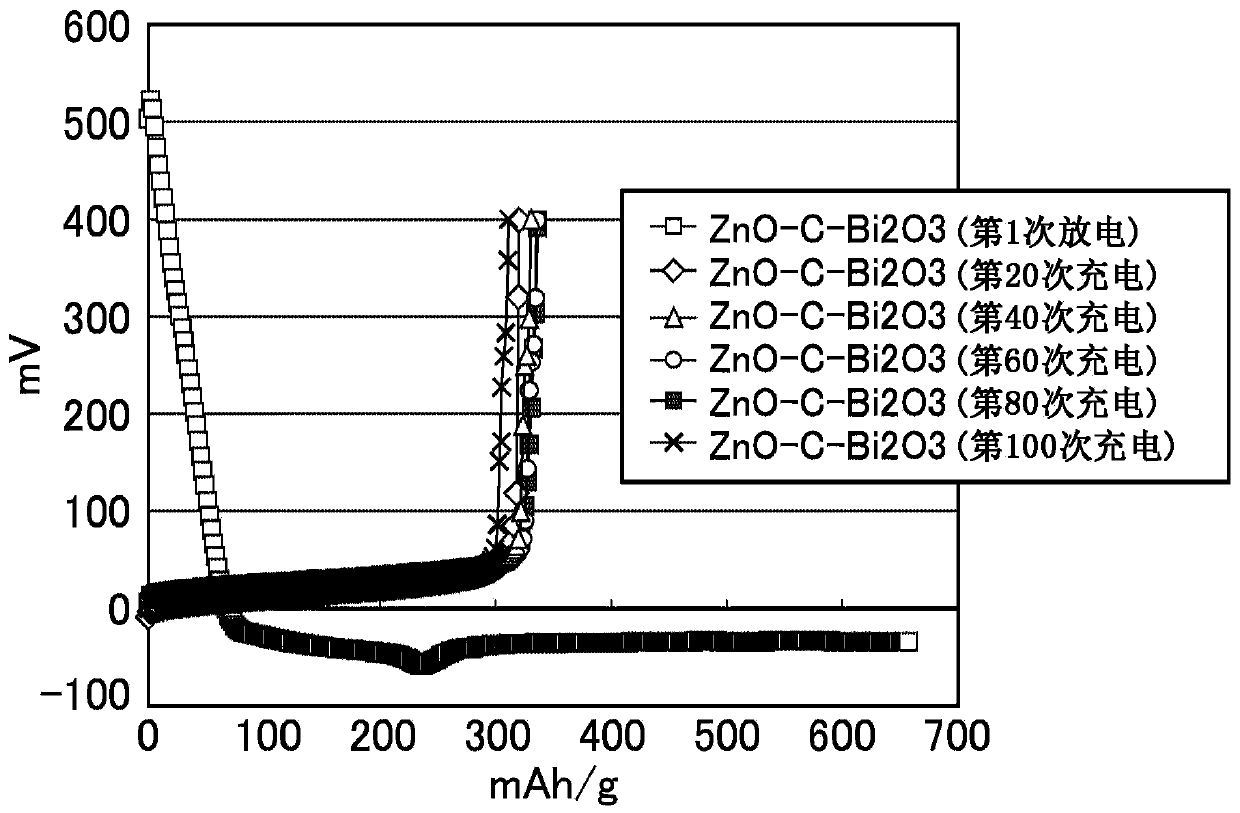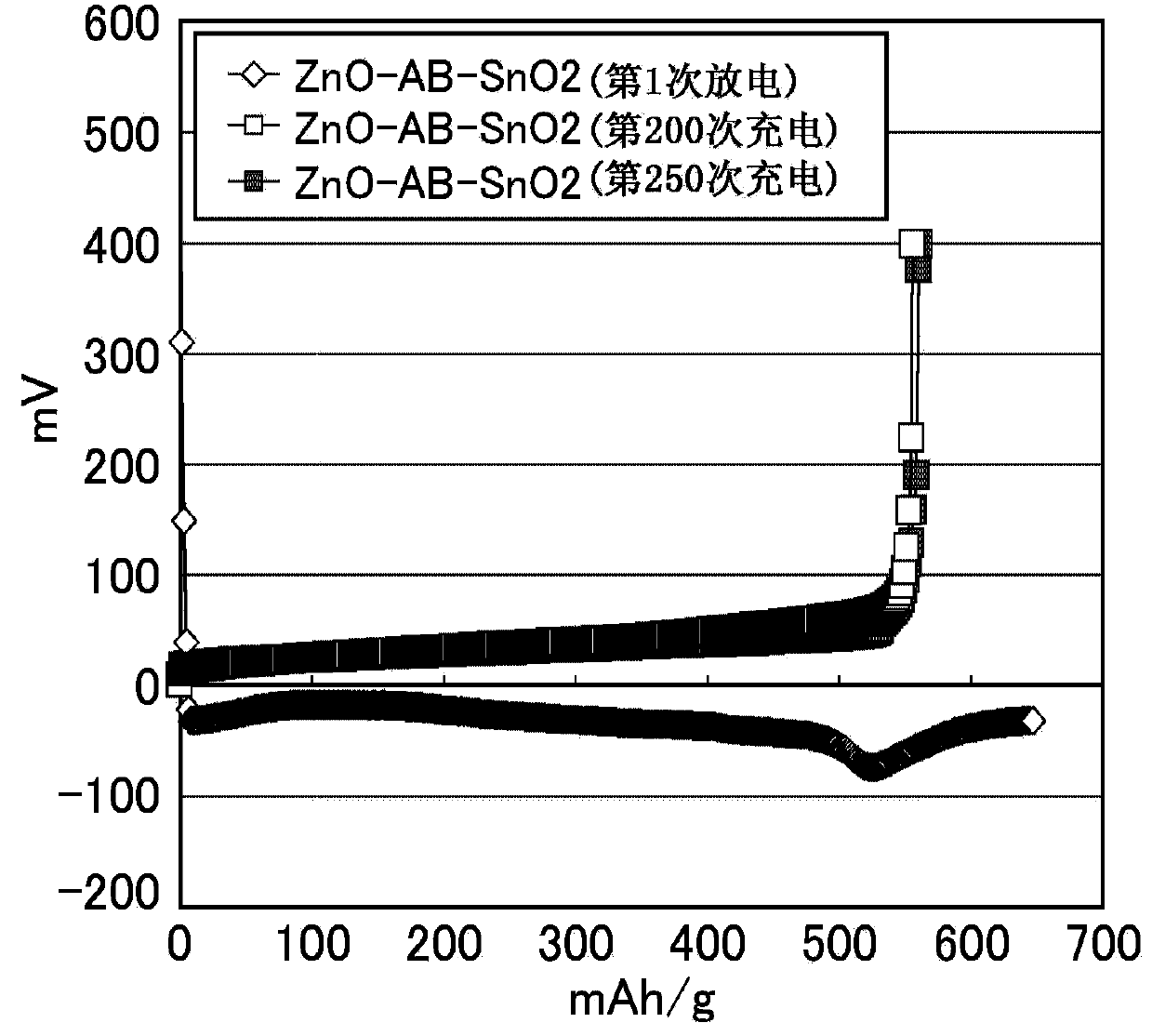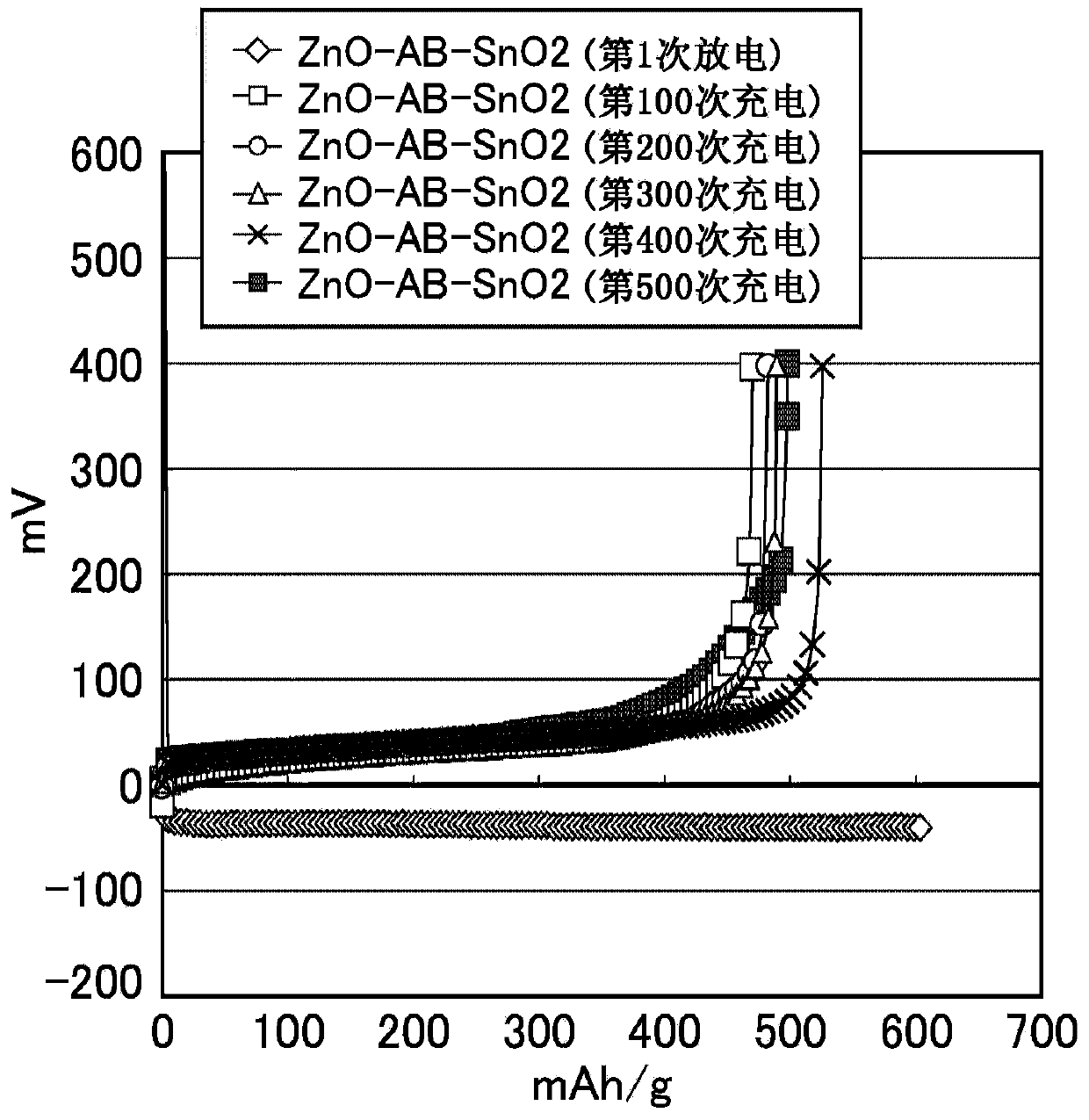Negative electrode mixture or gel electrolyte, and battery using said negative electrode mixture or said gel electrolyte
A technology of gel electrolyte and mixture, applied in the direction of electrolyte immobilization/gelation, hybrid battery, electrode of primary battery, etc., can solve problems such as short life and battery capacity deterioration
- Summary
- Abstract
- Description
- Claims
- Application Information
AI Technical Summary
Problems solved by technology
Method used
Image
Examples
Embodiment 1
[0330] Zinc oxide (average particle size: 20nm, specific surface area: about 20m 2 / g) 10.6g, vapor phase carbon fiber (multilayer carbon nanotube) (aspect ratio (vertical / horizontal): 100, specific surface area: about 10m 2 / g, average fiber length: about 15 μm) 0.35 g, and bismuth oxide (average particle diameter: about 50 μm) 0.87 g were added to the bottle, and pulverized by a ball mill using zirconia balls for 12 hours. The obtained solid was sieved so that the average particle size would be 25 μm or less. 1.3 g of this solid, 2.2 g of a 12% polyvinylidene fluoride / N-methylpyrrolidone solution, and 1.0 g of N-methylpyrrolidone were put into a small glass bottle, and stirred overnight with a stirrer using a stirring bar. The obtained slurry was coated on copper foil using an automatic coating device, dried at 80° C. for 12 hours, and then dried at vacuum (room temperature) for 6 hours. A pressure of 1 t was applied to the copper foil coated with the zinc mixture so th...
Embodiment 2
[0332] Zinc oxide (average particle size: 20nm, specific surface area: about 20m 2 / g) 10.5g, acetylene black (AB) (average particle diameter: about 40nm, specific surface area: about 70m 2 / g) 0.36g, tin oxide (average particle size: about 5μm, specific surface area: about 5m 2 / g or less) 0.87 g was put into a bottle, and pulverized by a ball mill using zirconia balls for 12 hours. The obtained solid was sieved so that the average particle size would be 25 μm or less. 1.29 g of this solid, 2.17 g of a 12% polyvinylidene fluoride / N-methylpyrrolidone solution, and 1.2 g of N-methylpyrrolidone were put into a small glass bottle, and stirred overnight with a stirrer using a stirring bar. The obtained slurry was coated on copper foil using an automatic coating device, dried at 80° C. for 12 hours, and then dried at vacuum (room temperature) for 6 hours. A pressure of 1 t was applied to the copper foil coated with the zinc mixture so that the film thickness of the zinc mix...
Embodiment 3
[0334] The zinc mixture electrode was produced by the same process as in Example 2. Made with an apparent area of 0.48cm 2 A working electrode (zinc mixture weight: 2.64 mg) was used. The counter electrode uses a zinc plate, the reference electrode uses a zinc wire, and the electrolyte uses a 4mol / L potassium hydroxide aqueous solution (5.2mg / L of dissolved oxygen) dissolved with zinc oxide to saturation, using a three-electrode battery with a current value of 3.83mA A charge and discharge test was carried out (charge and discharge time: each 1 hour / cut off at -0.1V and 0.4V).
PUM
| Property | Measurement | Unit |
|---|---|---|
| particle size | aaaaa | aaaaa |
| particle size | aaaaa | aaaaa |
| particle size | aaaaa | aaaaa |
Abstract
Description
Claims
Application Information
 Login to View More
Login to View More - R&D
- Intellectual Property
- Life Sciences
- Materials
- Tech Scout
- Unparalleled Data Quality
- Higher Quality Content
- 60% Fewer Hallucinations
Browse by: Latest US Patents, China's latest patents, Technical Efficacy Thesaurus, Application Domain, Technology Topic, Popular Technical Reports.
© 2025 PatSnap. All rights reserved.Legal|Privacy policy|Modern Slavery Act Transparency Statement|Sitemap|About US| Contact US: help@patsnap.com



